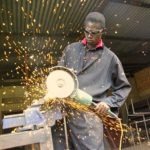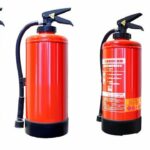The latest data from OSHA revealed that as of 2019, out of 1623 occupational deaths in the US, 566 were the result of falls from heights. These figures translate to approximately 35% of all death causes, according to EHS Today. Building high-rise structures involves complex requirements that demand accurate solutions and a high level of expertise beyond paperwork. For this reason, builders are turning to digitization to enhance the quality of structural designs and accuracy. This move aims to reduce the risk of injuries that revolve around falls from height and falling objects. Additionally, digital technologies improve productivity in terms of costs and time, something old and heavy machinery cannot accomplish. If you are new in high-rise construction, understanding what CAD-computer aided designing is will be essential. But most importantly, learn the safety considerations to increase productivity.

Choose The Right PPE
Choosing personal protective equipment for construction is crucial for the safety of workers. However, the process can be tricky, given the wide variety of options out there. That is why you should define the scope of work and research carefully. If, for instance, your job requires you to weld at heights, you need to research harnesses that withstand heat and offer comfort. Try to avoid standard nylon harnesses when working with welding machines or near high temperatures. Your purchase decision will also depend highly on various aspects like legislation and building codes, hazard assessment, workers, regulatory bodies, and manufacturers. Putting these factors into consideration helps in determining the right PPE, from full-body harnesses to respirators, footwear, face masks, safety goggles, earplugs and earmuffs.
Also Read:
- Common Red Flags That Tell You to Call the Concrete Repairman
- 16 Types of Cement used in Construction Work
- What is Portland Cement and How it is Manufactured?
Invest In Telescopic Boom Lifts
When building tall structures, you must factor in how workers will access hard to reach places. You can select between the articulating boom lift or telescopic boom lift depending on the job. While the articulating boom lift can reach over obstacles or objects, the telescopic work platform is more suitable for lifting workers in the air. Telescopic boom lifts function like telescopes, reaching to heights other aerial lifting equipment cannot. They are stable, provide more horizontal reach, and work efficiently even during windy and rainy conditions.
Telescopic boom lifts are gaining popularity for the extended reach they provide. Keep in mind that these aerial lifts come with various designs. It would be best to weigh up your options to ensure that you are investing in the right telescopic boom lift. At this point, your top priorities should be worker’s safety, weight capacity, height and range of buildings, size of the platform, and work environment. Understanding your construction needs helps you to make informed decisions.
Take Advantage Of Digital Technology
Advancement in technology is making significant impacts across various industries. The construction industry is not an exception, and many contractors depend on digitization to design buildings. Perhaps more surprisingly, digital technology is also fundamental in improving safety, especially in high-rise constructions. For example, the use of an exoskeleton aims to help workers to lift heavy objects while improving posture. This technology comes in two versions: power assist and unpowered, which help workers complete strenuous work without hurting themselves. Other technologies used to keep construction sites safe include augmented and virtual reality, site sensors, wearables and drones. Drones have gained popularity in construction, as they help inspect work sites, detect hazards, and monitor workers to ensure they are safe.
The thought of constructing skyscrapers is scary, given the many risks involved. However, when you adhere to safety regulations, it can be an exciting experience. In the modern world, there are various safety options. Aside from using PPE, workers depend on stable aerial lifting platforms to reach heights that ladders and scaffolding cannot. They also utilize digital technologies to predict hazards and then implement safety measures.








